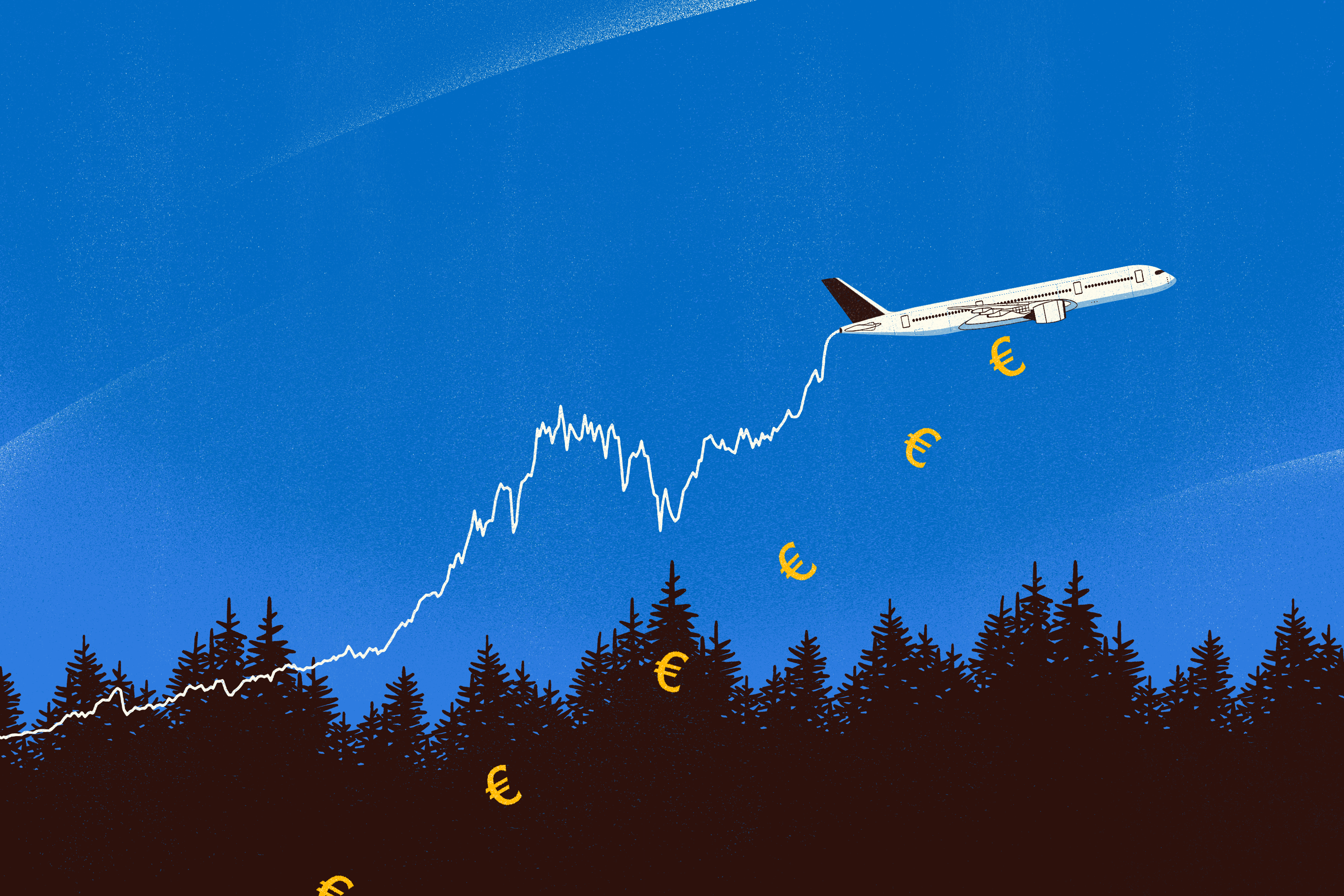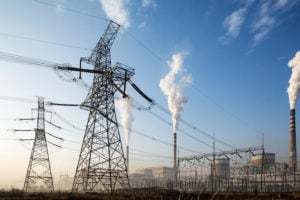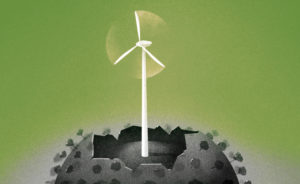The EU’s Emissions Trading System (EU ETS) is one of the world’s biggest and most liquid carbon trading markets. Until China’s national ETS starts trading later this year, it represents almost 90% of the value of global carbon markets. The system is undergoing big changes thanks to the EU’s ambitious environmental agenda. The effect of these changes has been to bring much greater focus and resources onto the use of clean energy in industry, with the aim of achieving the 2015 Paris Agreement goal of a net-zero-carbon economy.
China and the EU after the pandemic
Read more from this series, in which we compare the post-Covid policies of China and the European Union, and how their relationship is evolving
Carbon pricing is a key EU policy tool for combatting carbon emissions. The EU ETS currently covers 45% of all EU emissions, and operates in energy-intensive industry sectors, such as electricity and gas companies, oil refineries, steel works, raw materials manufacturers and commercial aviation. It works on the cap-and-trade principle, by setting a cap on companies’ carbon emissions and allowing them to trade the excess. By gradually reducing the number of carbon permits available each year, they create a virtuous cycle of rising prices and a greater pressure on companies to reduce their emissions and adopt clean energy technology.
Until 2017, the price of carbon permits was low, presenting little incentive for companies to tackle their carbon emissions. If the financial markets and the carbon emitters took little notice of the EU’s carbon price mechanism, it is because in their eyes its environmental policy lacked credibility. However, they started to pay attention when the Market Stability Reserve (MSR), a mechanism that enables Brussels to hold back any surplus of carbon permits and so create upward pressure on the price, was decisively reformed in February 2018.
The rising price of carbon
Adrien Assous, delegated director of Sandbag, a Brussels-based climate change think-tank, explained: “The MSR ordered the definitive cancellation of a large part of the surplus by 2023. This made the target [of reducing net emissions 40% by 2030] more credible and stimulated the allowance price.” In summer 2019, Ursula von der Leyen was voted in as president of the European Commission on condition that she propose raising the target from 40% to 55%. The announcement propelled the price above €30 for the first time since 2008. In December 2020, as part of its Green Deal, the European Council voted to raise the target to at least 55% by 2030. The EU eventually agreed on 55% on the eve of Joe Biden’s climate summit in April.
The combination of fewer allowances and a tougher emissions policy worked. The price of carbon rose from a low of about €4/tonne in mid-2016 to an all-time high of more than €44/tonne in April 2021. The European Commission says the ETS has contributed to an emissions reduction of 8.7% for the operators covered by the system in 2019, and a drop in emissions of 30% since 2005. However, although the pandemic last year reduced production levels, Assous says this “did not have much effect on industry’s behaviour, possibly because most carbon emitters get CO2 permits for free.”
Expect further increases
Trevor Sikorski, Head of Natural Gas and Carbon at Energy Aspects, a London-based energy research consultancy, fully expects prices to continue rising, as the markets react to the EU’s increasing grip on policy. He says: “So far, the pricing has been based on the target of a 40% carbon emissions reduction by 2030, but the Green Deal is much more ambitious. Policymakers in Brussels have been calling for a target of 60%, but we expect the 55% target to prevail. We expect prices to continue upward through the second half of this year. Our forecast for the second quarter of this year is €45/tonne and, if prices continue on the current upward trend, we may see an average of €45-50 for the year.”
Some analysts would say this is an overly conservative estimate, talking instead of €100/tonne for this year. Such a price would require a much tighter market, with an appropriately higher carbon emissions target, something that Sikorski believes would be met with strong opposition from the industrial sector. Nevertheless, the imperative of reducing greenhouse gases is gaining momentum and, although the transition takes time, companies are beginning to find ways to reduce their fossil fuel consumption, and move towards renewables such as solar and wind power. At the moment, Sikorski says: “To replace industrial heat demands with a non-fossil source, such as green hydrogen, is likely to cost over €100/tonne. Over time, costs for that will come down.”
The Holy Grail would be a global carbon pricing system implemented by all countries.Trevor Sikorski, Energy Aspects
Setting a price means treading a fine line. Assous says the EU should focus less on price and more on controlling emissions. “The price should settle at a level close to the cost of reducing emissions, which will vary from sector to sector. The switch to green hydrogen in some sectors or countries, could already be profitable now for under €40 (although for others, costs are still higher), and should fall to €20-40 this decade for all countries and sectors using hydrogen.” However, he says, this will necessitate a reform of the free allocation regime, which still gives grey hydrogen (derived from fossil fuels) a competitive advantage. Other abatement measures involving more recycling, or substitution for greener materials, could also yield cheaper abatement this decade.
Assous fears it is possible “the price might lose touch from the reality of abatement costs if the ETS’s mechanisms are so complex that traders don’t understand them and/or information on the cost of abatement is too imprecise.” For the sake of operational efficiency, therefore, he calls for greater transparency on carbon-intensity data and disclosure of abatement costs. As it stands, he says, “we have reservations about whether the cap-and-trade scheme’s reform will lead to any meaningful constraint on emissions. If it fails, the logic of the markets is that the carbon price will fall.”
Some lawmakers in Brussels fear that speculative capital – in other words, hedge funds – could distort the market pricing, but Sikorski believes such fears are overdone: “Speculative capital merely anticipates future market tightness and so is just the first to react to market trends.” Or, as Assous puts it: “In theory, if an asset is overpriced, then it should attract short sellers, ie speculators who bet on a price decrease. So, if the price seems ‘too high’, speculation should rather correct the problem than create it.”
As with any market, the carbon market has to find its level. If anything, at the moment, prices are still too low. Sikorski says: “There is a broad analytical consensus that a €60-80/tonne price level is actually needed to pay for clean energy technology. Although the extra €20-40/tonne may cause political problems, this transition to a carbon-free economy has to be paid for.”
Hydrogen, for example, is billed as the new source of energy that makes a carbon-zero ambition realistic. European Commission data says hydrogen represents less than 2% of Europe’s energy mix, but is projected to grow to about 14% by 2050, according to the EC’s press office. However, as hydrogen has yet to be made commercial, Sikorski estimates it may require the carbon price to be around €100/tonne.
Passing on the cost of carbon?
Reactions to an increased carbon price vary. As Sikorski says: “Energy companies are happy because they can pass the cost on to their customers. In fact, they lobbied Brussels for the introduction of the MSR as a way to increase their margins and to fund their adoption of clean energy technology. However, industrials and airlines don’t like it, as they rely on free allocations of carbon permits to mitigate the cost of carbon pricing.”
Most industrials accept the merit of clean technology but fear its cost may make them uncompetitive in the global market. To allay their concerns, and to prevent “carbon leakage” (where EU companies effectively export their carbon emissions to avoid the cost of meeting the more stringent domestic standards), Brussels is to introduce the carbon border adjustment mechanism (CBAM) to impose a carbon tax on imports that do not meet clean energy standards this year.
There is no sense in us Europeans going this road alone.Frans Timmermans, Vice-President of the European Commission
Such a policy, if implemented, would require careful presentation, as it could easily be seen by the EU’s trading partners as a form of tariff. Assous says: “If a CBAM is introduced for sectors that still receive other carbon leakage protections (ie free allocation), this would very likely be perceived by the EU’s trading partners as a protectionist measure. There also needs to be certainty that importing countries are not charged more than EU producers; this requires that the CBAM price is closely tied to the fluctuating ETS price, and that the carbon costs paid by exporters in their own countries is reflected in the CBAM price they pay.”
Sikorski is sceptical about the merits of CBAM. “I expect there will be a lot of pushback from Europe’s trading partners. The US, in particular, is very aggressive in defending its industry. A carbon tax would be very complex and raises a number of questions – for example, how to identify carbon content in any product and how to treat goods from other countries with carbon pricing? The Holy Grail in this area would instead be a global carbon pricing system implemented by all countries. This would have the advantage of not provoking retaliatory trade measures. However, the world is a long way away from this outcome.”
The EU ETS is an overarching policy designed to transform the European economy, but it has global implications too, not least because similar systems are in different stages of implementation in China, South Korea, the US, Switzerland and the UK, among others. Vice-President of the European Commission Frans Timmermans said in a speech at Tsinghua University last November: “While we are convinced that the Green Deal is the right path to a sustainable future, there is no sense in us Europeans going this road alone. Working together with international partners is an absolute must. I do think that Europe and China have a special responsibility to shoulder, just like other powers such as the US and India.”
In calling for climate action from all countries, Timmermans was nevertheless realistic about the prospects of global policy co-ordination in the short term: “If differences in levels of ambition persist and there is a risk of carbon leakage, the Commission will propose a carbon border adjustment mechanism, for selected sectors, to reduce this risk.”
This is the message that Timmermans will doubtless repeat at the upcoming G7 and G20 summits, opportunities for him to present the CBAM properly as a climate measure, and to calm concerns about protectionism. This could also open a broader discussion on international carbon pricing and build climate action momentum ahead of the Glasgow COP26 summit in November.








